World Heritage Site - Itsukushima Shrine (Miyajima)
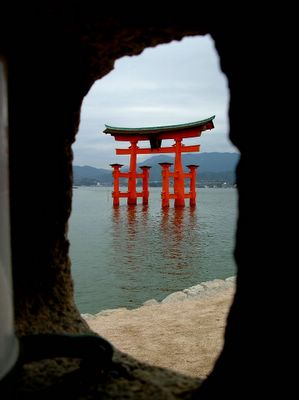
Miyajima (宮島町; -cho) was a town located on Itsukushima Island (sometimes referred to as Miyajima Island) in Saeki District, Hiroshima, Japan. On November 3, 2005, it was amalgamated into nearby Hatsukaichi City.
To give birth, to die or to be buried were forbidden on this island. Even logging is also forbidden, leaving the island covered by the virgin forest, and providing a habitat for thousand of bird species and the tame deer which are allowed to roam freely.
There are still no hospitals or cemeteries on the island. Miyajima is one of the Japan's most scenic sites, so if you are visiting Hiroshima, take a day to visit Miyajima, too. It takes about 30 minutes from Hiroshima to Miyajima-guchi by a JR local train and 10 minutes from Miyajima-guchi to Miyajima by ferry.
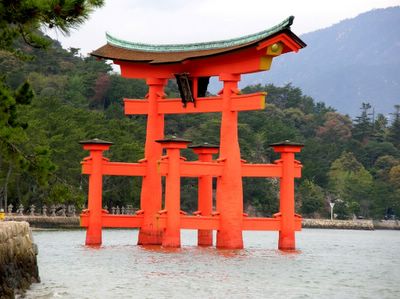
You can see the red dramatic large gate (torii) , which guards Itsukushima Shrine on the ferry. The gate has existed since 1168 though the present one was built in 1875. The gate built with camphor wood with the diameter of a pole measured at about 13 feet and the height of the torii is about 52 feet. It was built in a four-legged (yotsu-ashi) style to provide additional stability.
The gate only appears to be floating at high tide, when the tide is low, the gate is surrounded by mud and can be accessed on foot from the island. It is common practice for visitors to place coins in the cracks of the gate’s leg and make a wish. Gathering shellfish nearby the gate is also popular at low tide. At night, powerful lights on the shore illuminate the gate perfectly.
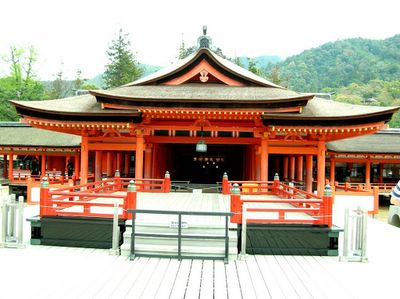
The Itsukushima shrine is dedicated to three princesses: Ichikishima-hime, Tagori-hime, and Tagitus-hime and the shrine dates back to the 6th century. Then, one of Japan's most powerful men (warlord), Taira no Kiyomori, rebuilt the shrine in 12th century. The shrine has been in its present form since 1168. Walking on the walkways between the buildings is an interesting experience. There is the Japan's oldest Noh theater in the shrine. Also, bugaku (ancient music and dance), which was introduced to Miyajima by Kiyomori, is staged.

On September 5, 2004, the shrine was severely damaged by Typhoon #18. The boardwalks and roof were partially destroyed, leading to its temporary closure. Though now reopened to the public, as of 2006 work is still ongoing to repair the damage.
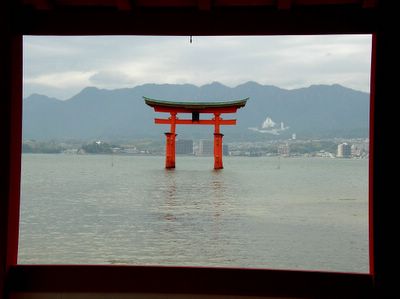
It is an UNESCO World Heritage Site and the Japanese government has designated it as Japan's Important Cultural Property and national treasures.
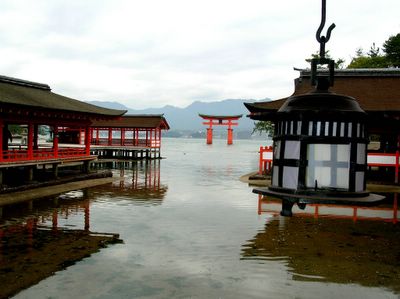
There is also a cable car from near the town, which runs almost to the top of Mount Misen, the highest point of Itsukushima island. At Mount Misen station of the cable car, you can sometimes watch monkeys running around freely.
tags : Miyajima Itsukushima Shrine World Heritage Site Japanese National Cultural Treasure




0 Comments:
Post a Comment
<< Home